What makes holiday marketing in 2021 different from any year? You already know the answer to that.
The pandemic changed everything. How people work, shop, and spend their time. What people value and no longer consider all that important. It also gave way to a new era of social media content and internet culture. Online trends are constantly shifting, and what the algorithm loved a week ago might be passe today.
If you’re running a holiday marketing campaign in 2021, you need to be on your game. Don’t miss out on the biggest promotional period of the year due to an out-of-touch mindset and outdated tactics.
This guide will walk you through holiday marketing in 2021. We’ll start by setting the scene for the present online (and offline) culture, and move into holiday marketing strategies and ideas you can put to use for your business.
What to Know About Holiday Marketing in 2021
Certain aspects of holiday marketing in 2021 are timeless. Others relate directly to this bizarre COVID-fueled era we’re all in. There’s no predicting the future, but a lot of experts (both marketing and sociological) agree that many of the mindsets spawned by the pandemic are here to stay– at least for the foreseeable future.
Here’s what to know about holiday marketing in 2021:
1. Competition is higher
Standing out online is a challenge at any time of the year. Doing so during the holidays can feel nearly impossible. Big companies with big budgets flood social media and Google search results with content and campaigns. Users may post more often, sharing their family photos, Christmas trees, menorah lightings.
As a result, the amount of content you’re competing with multiplies. The social media feed is crammed with corporate and individual content. If you’re running Google Ad campaigns, the average cost-per-click (CPC) may even shoot up.
Unless you have a sizable budget and/or audience already, you’re fighting an uphill battle trying to appear on anyone’s screen. That’s okay, though, because there are alternative marketing tactics you can use to show up in a meaningful way (more on that later).
2. People spend less time on social media.
While this varies from person to person, on average people tend to spend less time on social media during the holidays. They may be spending more time with family. They may be pushing to finish work projects by the end of the year. They may be fed up with the constant barrage of advertisements. They may just be exhausted, and unplugging more often as a result.
Between the increased competition and the decreased amount of time people spend online, holiday marketing in 2021 can feel impossible. This is another reason why businesses should think beyond typical marketing tactics and incorporate more wholesome, holistic holiday marketing strategies in 2021.

3. People miss retail.
With the pandemic spewing stay-at-home orders and general isolation, many people are relishing the experience of shopping in person. Even for introverted home-bodies (like yours truly), there is something magical about taking to the bustling holiday streets. Walking between the charming shops, and taking in holiday decorations and winter fashion.
While online shopping will forevermore have its place, this year–perhaps more than others since the internet boom– people are enjoying getting out and enjoying brick-and-mortal retail. This presents a great opportunity for local shops who might otherwise lose a much larger portion of sales to the online giants.
4. …But they’re still shopping online.
Even with the reemergence of in-person shopping, most people will still do at least some of their shopping online. It’s just too convenient and compelling for the average person to ignore. Not to mention, many people are still erring on the side of caution when it comes to crowds and indoor environments.
And so, the pull of online shopping remains. Whether they are planned purchases or an impulse buy driven by promotions or savvy content, people will still be pulling out their credit cards while snuggled up on the couch.
The question is, then, how can you best reach and appeal to these people– online and off– this holiday season? Here are a few holiday marketing strategies to consider in 2021.
Holiday Marketing in 2021: Strategies to Consider
1. Get creative with your marketing content
You don’t need us to tell you people don’t like advertisements. In fact, most of us have a sense of “ad blindness”– we scroll or swipe right by advertisements, without even seeing them (or seeing and begrudging them for interrupting our experience).
Rather than trying to come up with the “perfect ad” to capture your target’s attention and get them to make a purchase (hint: it doesn’t exist), focus instead on creating content for the fun of it. Not yours, necessarily, but your audience.
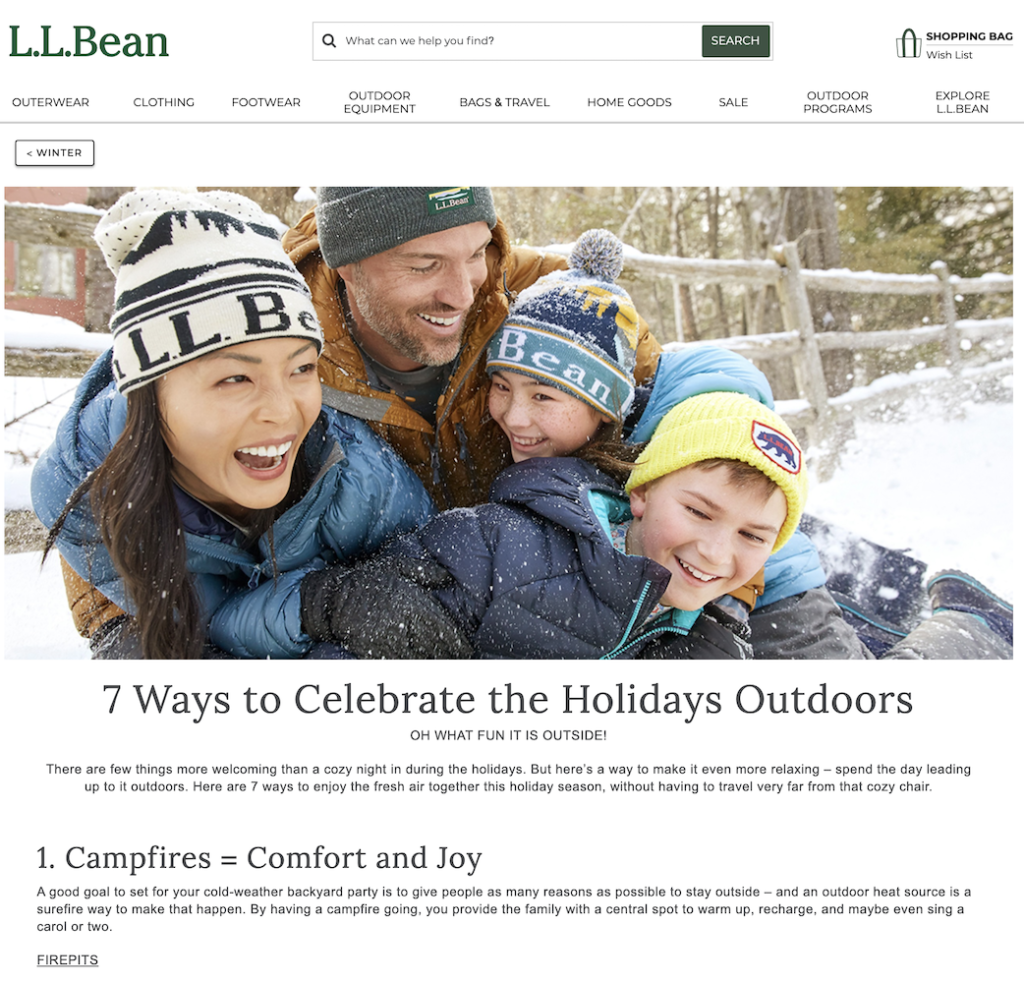
What will they find fun, entertaining, thought-provoking, or engaging? What will stop their scroll? Get them to like, comment, share? What will be so interesting that curiosity compels them to click through to your profile, website, or enter your storefront?
Not every piece of content you put out there needs to be directly related to sales. In fact, it shouldn’t be. It should all be relevant to your target market and/or industry. It should make them laugh, think, or wonder. This kind of content has a much better chance of capturing your target audience’s attention than just another ad on their newsfeed or sign in the window.
Incorporate social impact marketing
Holiday marketing tends to follow one of two themes: “buy from us,” or “buy for them” (as in, someone the customer knows personally). That’s not to say these themes aren’t relevant or effective, but they get old. From November to December, we’re bombarded with holiday marketing messages that are pretty blatantly consumerist.
What if you incorporated social impact into your holiday marketing in 2021? People are already in the giving mindset. The holidays have a tendency to make us hyper-aware of all we have, and of what others do not.
No one likes to think about children without presents to open on Christmas, people experiencing homelessness suffering through a brutal winter. A holiday marketing campaign that includes social impact efforts is one that will stand out, pull at the heartstrings, and make a real difference to those experiencing hardships.
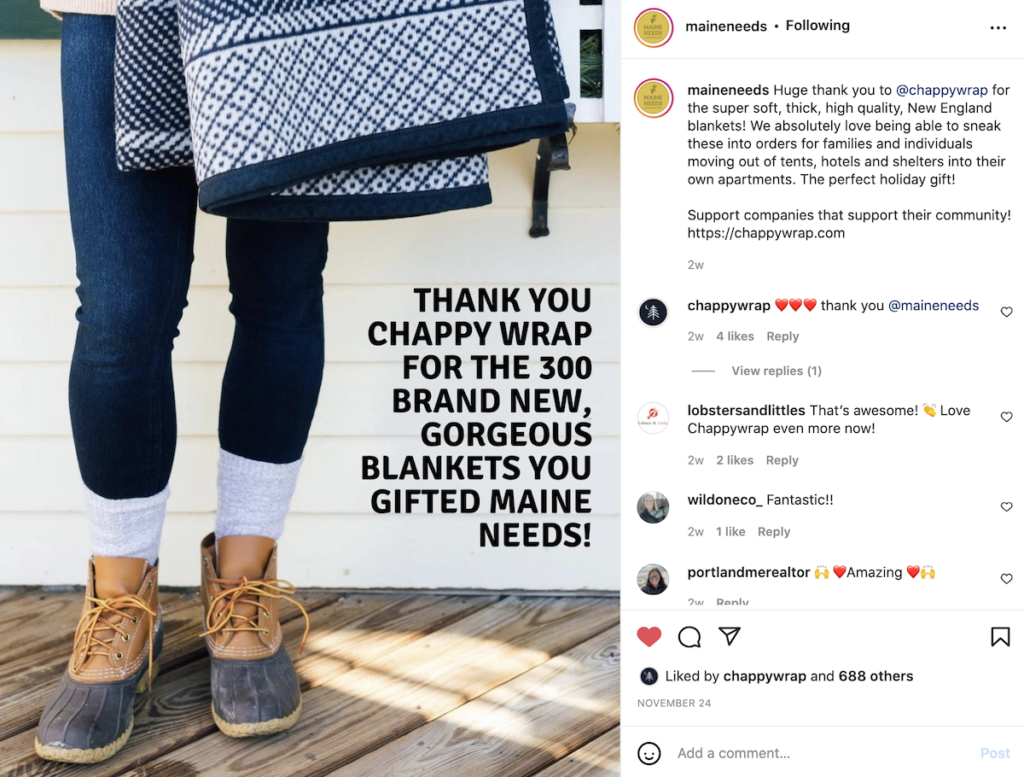
How can you incorporate social impact into your holiday marketing in 2021? Get creative.
- Donate money, inventory, or professional services to a local charity or nonprofit.
- Set up a “donation match” program, where customers can add an extra $5, $10, or $20 onto their purchase that you will then match.
- Introduce a “buy one, give one” program where you donate an item for each one that is purchased.
- Put together product bundles or gift baskets for customers to purchase for donation to a charity or nonprofit.
- Come up with your own idea for giving back, based on the specific needs of your local community, the products you carry, or the services you offer.
Any of these ideas offer a multitude of benefits. They provide compelling content to create, share, and talk about. They will likely get you tagged or otherwise publicly thanked by the organizations you support (see above! That Instagram post went out to MaineNeeds 16.5K+ followers). They could encourage word-of-mouth promotions, the most valuable marketing of all. They may be tax deductible. And of course, they give back to your community or the world around you, which alone makes it worth doing.
Provide experiences, not products
People tend to prefer memorable experiences over products. This is truer than ever in 2021, when the last two years have awakened our appreciation for out-of-house life, people, and travel. Find a why to provide experiences as part of your holiday marketing campaign, and you’ll be tapping into a deeply rooted craving on an individual and cultural level.
You don’t need to be a travel agency to pull this off. Any business can find ways to incorporate experiences into their holiday marketing in 2021, if you’re willing to get creative.
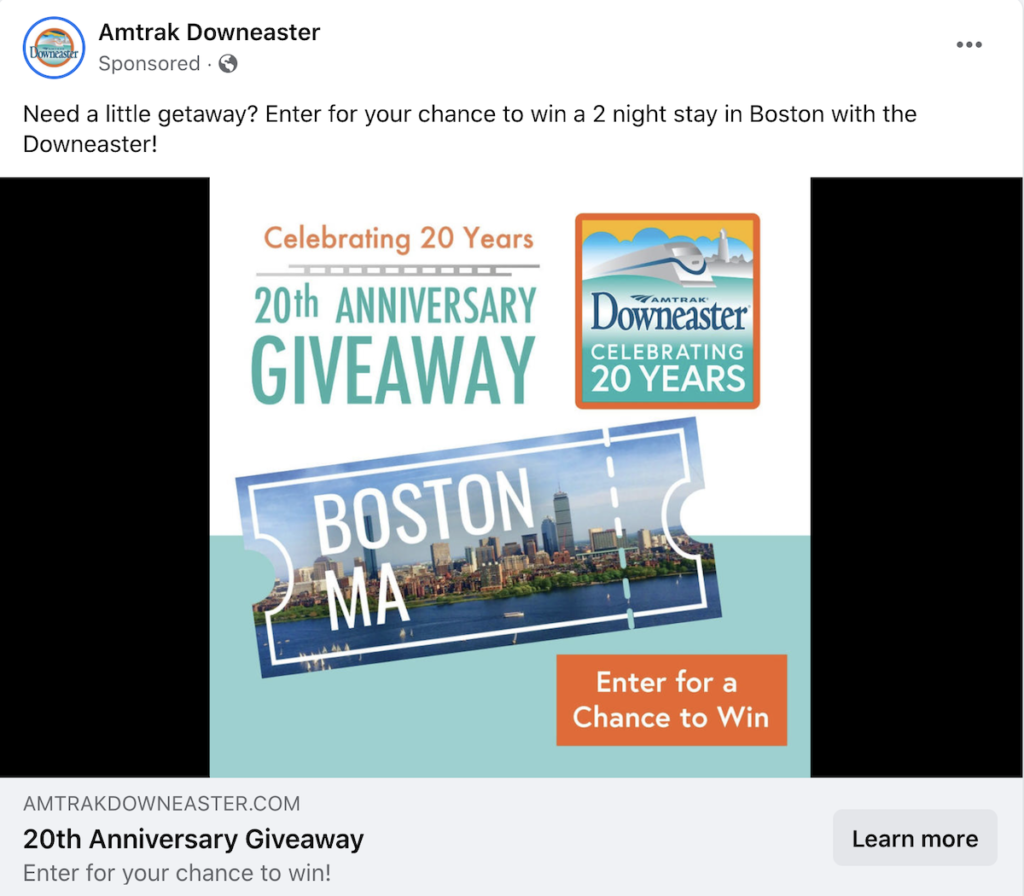
- Run a contest or giveaway that offers a plane ticket, hotel stay, or local experience like concert or event tickets
- Partner up with a local restaurant or venue to provide joint offerings– such as a discount to the others’ business when customers make a purchase
- Put on a (socially distanced and/or outdoor) live or virtual event
- Offer products or services meant to be enjoyed with others and/or outside
You can probably come up with other ideas specific to your business if you put some thought into it. Look for inspiration from the industry and/or the community around you as well. And don’t be afraid to look beyond that– sometimes the best ideas are completely transferable.
Team up with relevant influencers
Influencer marketing has its place year-round, but perhaps even more so during holiday marketing campaigns. Because of the heightened competition to appear online, teaming up with someone who has a loyal and relevant following is a smart way to work around an algorithm that’s working against you.
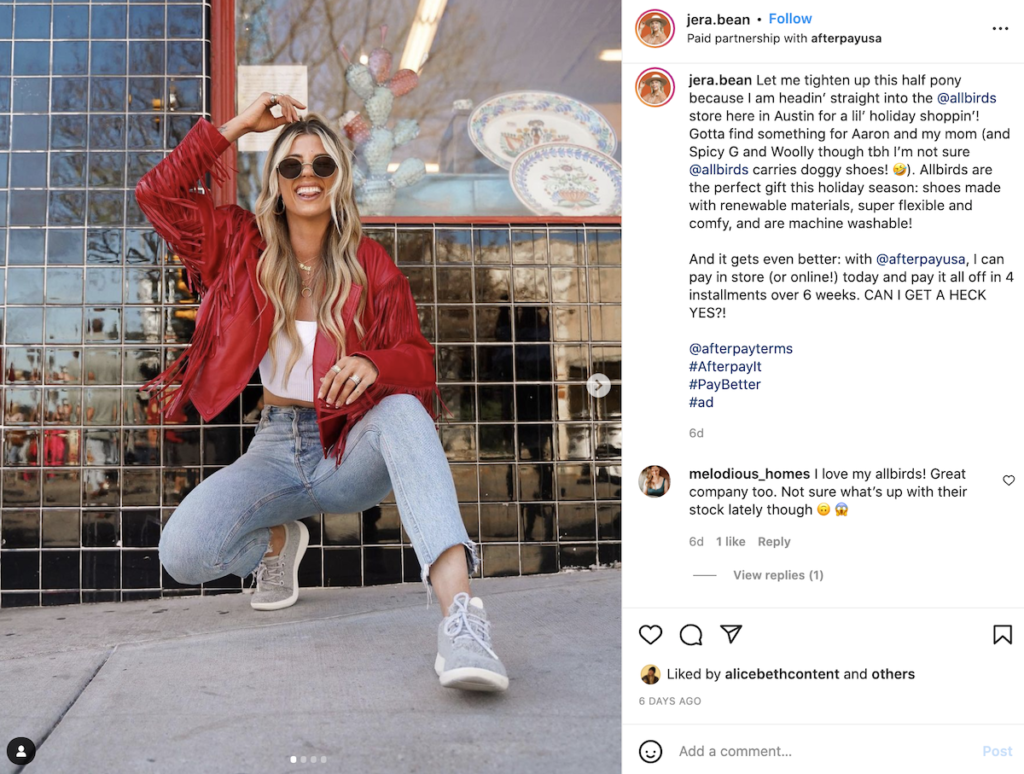
The key here is relevancy– you only want to team up with influencers who share an audience that you’re already targeting. If they have 150,000 followers, but you’re unsure about whether they overlap with your target audience, that’s a poor investment. If they have 10,000 followers that directly overlap with your audience, that’s a smart move.
“Micro-influencers”– accounts with “only” 10,000-50,000 followers rather than the 500,000+ followers boasted by premier influencers– offer a great marketing opportunity. They’re much more affordable than their more famous counterparts and their audiences are often more intimate and loyal. Focus more on the relevancy of the message and audience when considering influencer holiday marketing in 2021.
Partner with relevant businesses
Partnering with relevant businesses– whether local or digital– provides similar benefits to #’s 3-4 of this list. It helps you tap into a new audience and provide a more compelling, potentially experiential offer to that audience. It can also feel a bit more fun and less lonely or overwhelming, as you have a partner with whom you can ideate and celebrate.

As with influencer marketing, the key here is to ensure you team up with businesses that are relevant to yours. That’s not to say you have to be in the same industry– in fact, that might be tricky if they are direct competitors. But you should both have a shared audience– though you may find yourself able to go a bit more “macro” with this one.
If you run a brewery, it may make sense to team up with a nearby restaurant. People who like beer, also gotta eat. If you’re an online jewelry maker, you could team up with an apparel company. If you’re a hotel group, teaming up with a local tour provider makes a lot of sense. Put yourself in your customers’ shoes, and take a look at the market around you. Where might there be a logical partnership to pursue?
Focus on existing customers
It’s tempting to run holiday marketing campaigns to attract new customers, but don’t forget about your existing base. In fact, it tends to be easier and cheaper to reach and sell to past or existing customers than completely new ones.
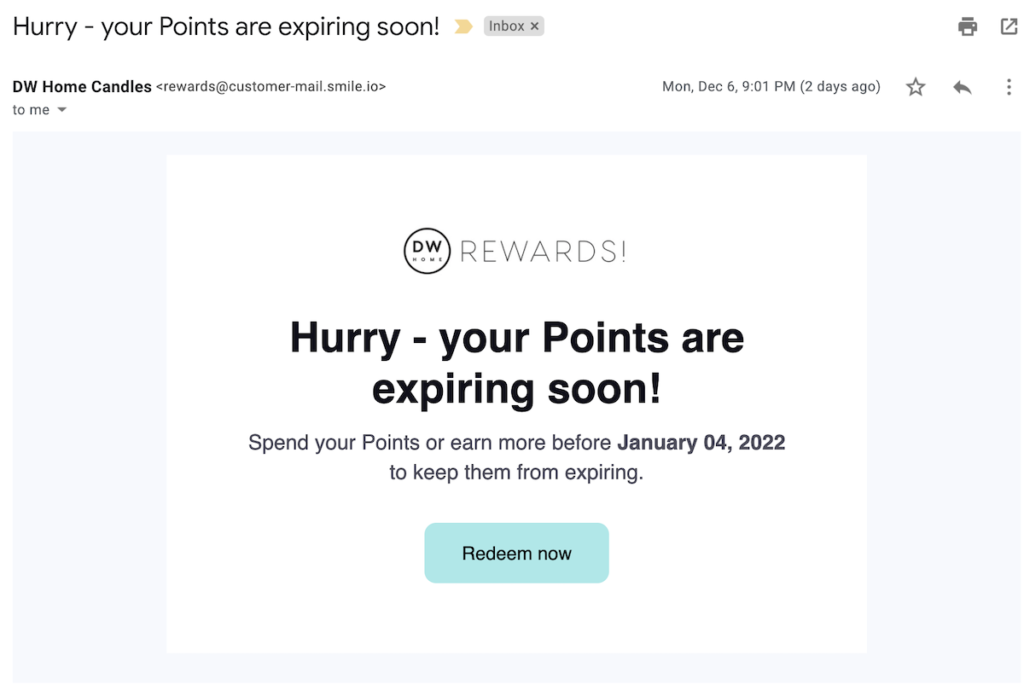
With existing customers, there is already some brand recognition. Unless something went wrong the first time, there is some trust established. And you likely have a way of reaching them, whether that’s through social media, your email list, or retargeting campaigns.
Some ideas for targeting existing customers:
- Email them with special discounts and offers, available only to those on your list.
- Run a retargeting campaigns to show ads to those who visited your website, looked at certain content, or completed a purchase.
- Offer a loyalty rewards program, such as a punch-card or points system that can be put toward future purchases
- Offer a referral incentive, such a discount, freebie, or even money back when they refer a new customer to your business
Don’t neglect your existing customer base during your holiday marketing campaigns. If anything, you should be prioritizing them.
Measure, adapt, evolve.
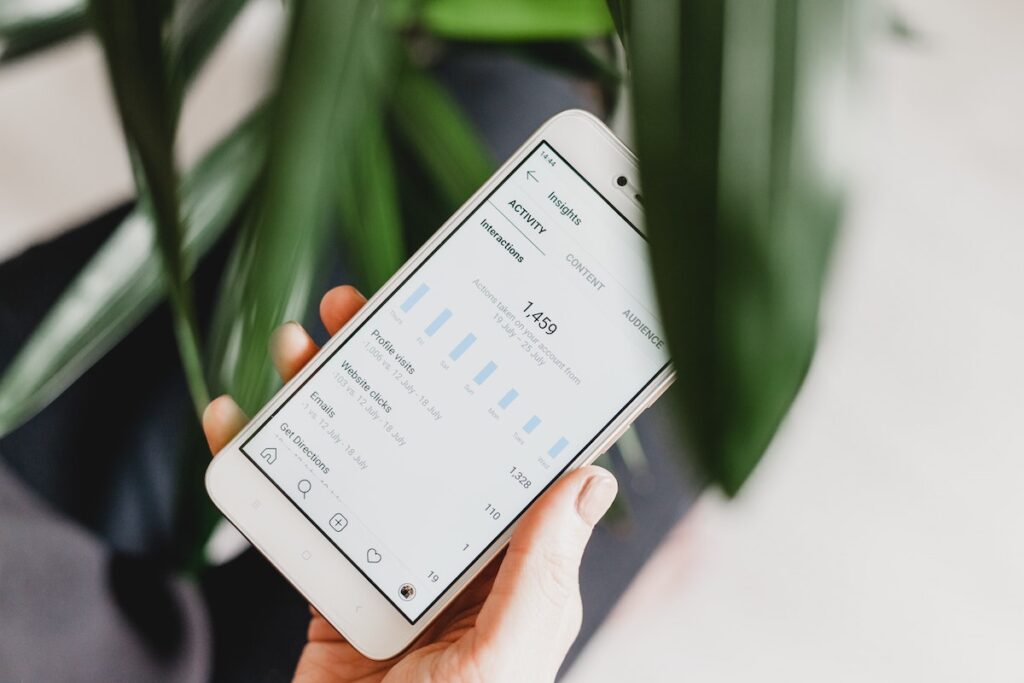
None of these holiday marketing strategies are guaranteed. Even when the strategy is sound, the way in which its executed varies. It’s likely you need to experiment with different messaging, visuals, channels, and audience segments in order to find what works best.
The golden rule of marketing in all instances is to measure, adapt, and evolve. Even the most experienced marketers find themselves adjusting their campaigns according to the real-time metrics and feedback from the target audience. In fact, that’s what the best marketers do. We can only make our most informed, educated guesses as to what’s going to work. The rest is up to the audience.
That’s all to say– be ready to adapt and evolve as you push through your holiday marketing in 2021. A slow start doesn’t necessarily mean your strategy is worth throwing out. It may just mean you need to make a few tweaks to get the best results.
Get help with your holiday marketing in 2021
We hope you found this holiday marketing guide helpful. We have all the confidence in you being able to put these principles and ideas into action and carrying out your own successful holiday marketing campaign.
That said, if you decide you would like some help, we are only a few clicks away. Browse our wholehearted marketing services, book a strategy session, or contact us to enlist our help with your holiday marketing in 2021 (and beyond).

 hire us
hire us